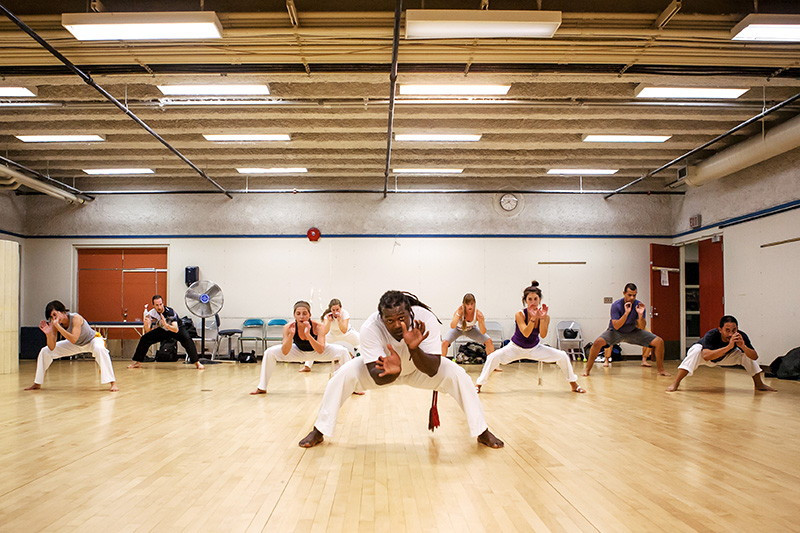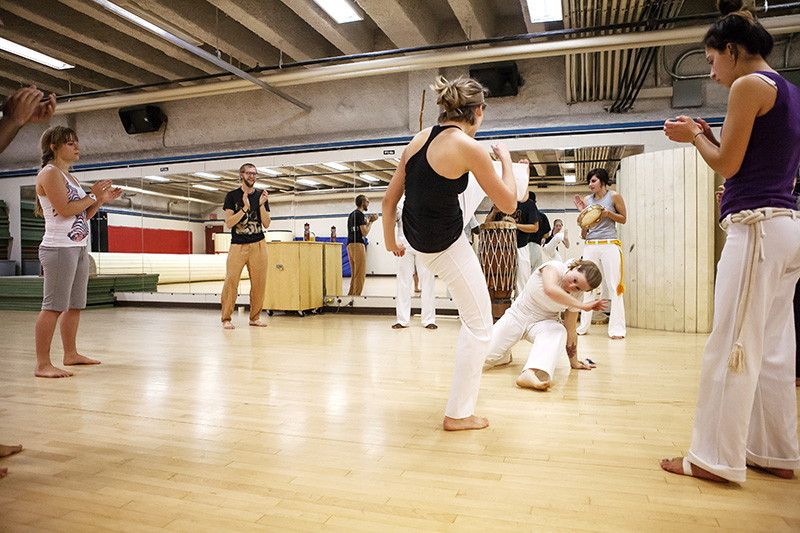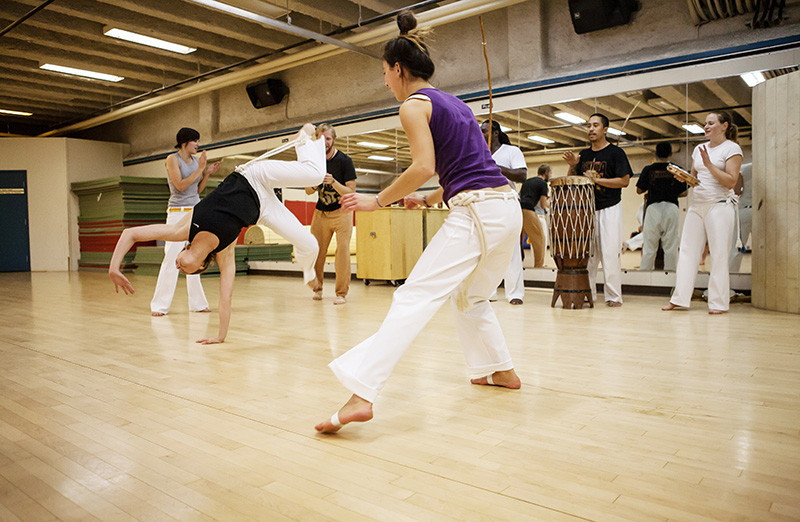Sweet moves at the Duckworth Centre
New capoeira class opens up at the university
You have probably marveled at the dance/fight acrobatics of capoeira before, either as featured in ‘90s rebel-high school-redemption flick Only the Strong and Vincent Cassel’s brilliant laser evasion scene in Ocean’s Twelve or, most likely, at the most bedazzling annual cultural performance in Winnipeg each year, the Brazilian Folklorama pavilion.
And now, you can take the magic home - to your own backyard!
Capoeira classes are officially on at the University of Winnipeg campus, and the floor has plenty of space for participants still looking to learn some sweet moves.
The class is led by Prof. Baiano (born Fabricio Santos de Jesus), who moved from Rio de Janeiro Brazil to Canada in 2010 to perform the martial art, and ended up teaching classes in Regina and, now, Winnipeg.
Being just one belt short of Mestre status, Baiano hopes to become a Brazilian cultural connection to the world by teaching a much larger group of capoeiristas in the future.
Though contemporary capoeira is a playful mix of fight and dance, its origins date back to Portuguese colonialism in Brazil, when African slaves who had escaped from sugar and tobacco plantations developed it as a deadly form of combat.
Following the proliferation of capoeristas as gangsters and political disruptors, the practice of capoeira was outlawed and penalized in the late 1800s, but was later recognized as an important Brazilian cultural art in 1937, when Mestre Bimba opened the first capoeira school.
Capoeira has been popularized globally since.
Capoeira today combines elements of the original capoeira, which featured plenty of legwork, with additional acrobatics.
When capoeristas are not “playing” inside the circle which they form, called a roda, they play traditional instruments, sing and clap in order to provide the foundation for capoeira - rhythm and music.
The local class also includes a folk dance form of capoeira in which participants move in rhythmic patterns while keeping beat with a pair of sticks.
According to Baiano, for whom capoeira has been a lifestyle since age six, capoeira gives the student increased self-control, a different perspective of the world and a new way to move the body.
He emphasizes that the joy of capoeira is not in admiring the flips and twists of the pros, but in the personal satisfaction students get from achieving such things for themselves.
“It’s therapy, ” says Baiano.
Liane Veness, a 35-year-old architect, has practiced capoeira for three years since she was introduced to it at Folklorama. She is not drawn to capoeira’s element of fight as much as she’s drawn to its inherent cultural elements of dance and Brazilian folk music.
For Veness, the combination of flexibility conditioning, strategy, mind, rhythm, music and culture make capoeira an exciting way to be fit.
My own teen-boy fantasy came to life for the first time as I stepped on the floor last Tuesday, danced back and forth with beat sticks, spun some eye-level kicks and assisted backflips, and worked constantly to keep my balance while playing another capoierista.
My thighs and ankles have yet to recover from the workout, sure, but my blistered feet have calloused up and are ready for another roda. Bring it on!
Classes run for fall and winter 2012-2013 and are held biweekly - Sundays 2 p.m. to 4 p.m. and Tuesdays 8 p.m. to 10 p.m. in the auxiliary gymnasium in the Duckworth basement. Costs per semester are $90 for non-students and $50 for students paid to the Duckworth registration desk.
Visit www.wesmen.ca for details.
Published in Volume 67, Number 8 of The Uniter (October 24, 2012)









